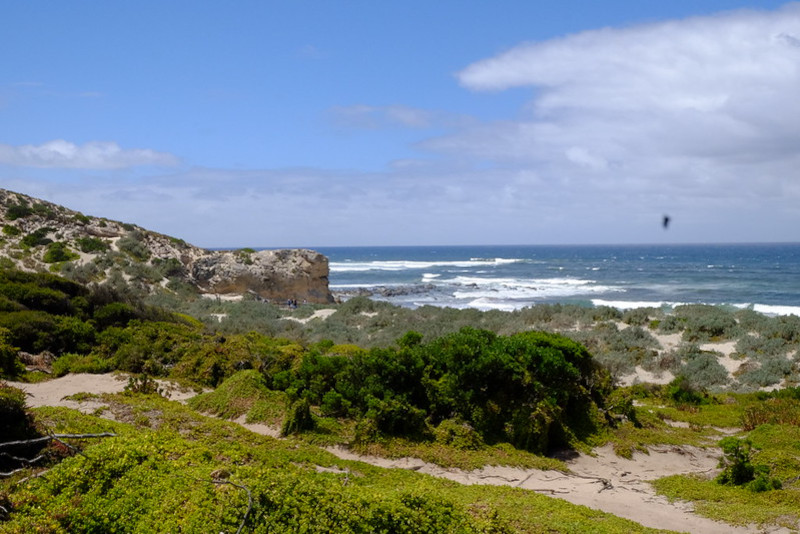
Kangaroo Island Facts
- This breathtaking creation of time and geological forces most frequently goes by the distinctive english language name of Kangaroo Island. For the moment, this magnificent location does not possess any other broadly accepted general titles.
- Yet, it does have another moniker, albeit one much less known. That’s actually the original term for the marvel. In the native tongue of the local Indigenous Peoples, the Kaurna, it holds a tag that translates as Karta Pintingga, or Island of the Dead.
- It’s unclear exactly when the ancestors of the Kaurna population first settled the island. Archaeological evidence indicates, however, that this occurred sometime around 16,000 years ago. It’s believed that the last native inhabitant left about 2,000 years ago.
- Rising sea levels apparently precipitated this exodus. This began occurring approximately 10,000 years ago, due to the receding of ice from the last ice age. That rise cut this area off from the mainland, turning it into the island it exists as today.
- History credits captain Matthew Flinders as the first European explorer to spot the site, though. This took place when he landed on the northern coast, in March of 1802. Soon after, whalers and sealers began establishing various temporary settlements.
- Fortunately, despite the undeniable beauty and attractions of Kangaroo Island, tourism remains manageable. Several extensive Nature Reserves additionally serve to protect large portions of the island. Flinders Chase National Park is the largest.
Related Articles
Kangaroo Island Physical Description
Much like its namesake, the natural beauty of Kangaroo Island literally jumps out at those fortunate enough to visit the site. That’s simply because Nature blessed it with an abundance of natural marvels. The formation also boasts some resprectable dimensions.
Its shape is rather difficult to describe in so many words, though. That’s primarily roughly rectangular, with a small, thin, highly elongated extension at one end. This peninsular section of the island measures less than 0.6 mi (1 km) in width at one specific point.
Including this projection, the island holds a length totaling roughly 90 mi (144.8 km). Yet, at its widest point the geological wonder has a width of about 34 mi (54.7 km). Taken together, these measurements provide it with a total area of 1,701 sq mi (4,405 sq km).
The coastline of this beautiful creation of natural processes also has a highly irregular structure. This serves to generate a significantly greater extent of coastline than one might think. That’s because the perimeter of the site runs for an impressive 336 mi (540.7 km).
Yet, the purely physical marvels of lovely Kangaroo Island do not simply end there. This mesmerizing location also contains other structures and features to merit appreciation. These include several small mountains, with the highest standing 1,007 ft (307 m).
Other spectacles of geological origin include multiple pristine beaches and several intriguing rock formations. The best known of these bears the appropriate name of Remarkable Rocks. Magnificent bays, such as Vivonne Bay and Emu Bay further add to its allure.
Kangaroo Island Location, Formation, and Ecology
The visually captivating Kangaroo Island formed in a region of the world already renowned for the presence of other natural wonders. That region of the earth’s surface likely won’t amaze anyone, though. This amazing island formed just off the coast of Australia.
More precisely, it lies off the south-southeast side of the continent. In fact, its precise location puts it a mere 8.4 mi (13.5 km) from the closest projection of the larger landmass, Snapper Point. This further places it roughly 70 mi (112 km) southwest of Adelaide.
The formation of this visually appealing section of the globe truly began as a result of the aftermath of the last great ice age. Prior to the melting of the massive amounts of accumulated ice, this area was contiguous with what’s now the neighboring landmass.
That action occurred due to the enormous increase in the depths of the world’s oceans that created. So great was the quantity of water contained within the ice that its melting raised the sea level roughly 394 ft (120 m) globally. It rose at a rate of about 3.3 ft (1 m) per century.
Kangaroo Island further possesses a warm-summer Mediterranean climate. Due to that, life abounds here, both flora and fauna. Among flora, scientists have recorded 891 species of plants native to the island. These include varieties of grasses, several orchids, and trees.
The site also teems with animal life. This includes birds, such as the Little Penguin, along with multiple other species. Several amphibians also live on the island, in addition to bats. The place remains best known, though, for its thriving kangaroo population, thus the name.
Features Sharing Its Region
Check out our other articles on 3 Amazing North American Amphibians, Marbled Polecat, Mississippi River, Great Rhododendron, Spiny Butterfly Ray, Fire Salamander, Black Mamba
